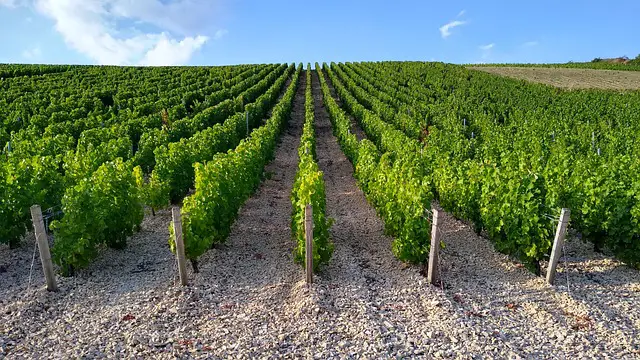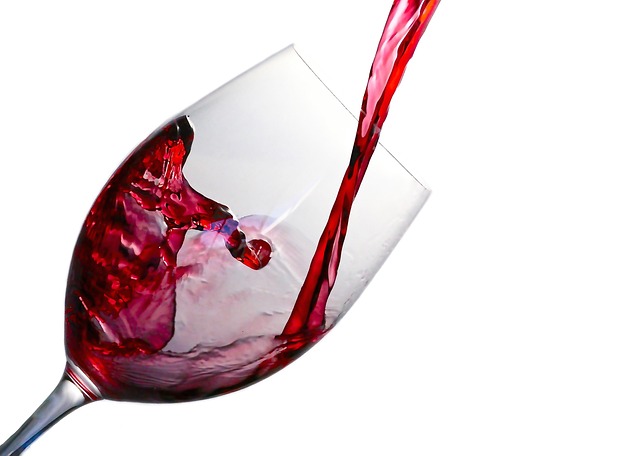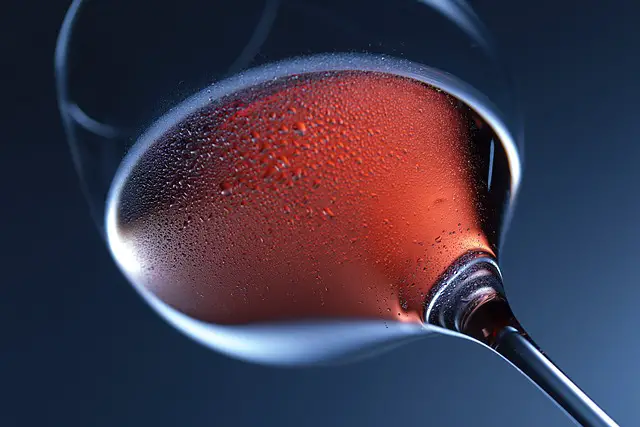Are you tired of standing in front of the wine aisle, staring at endless rows of bottles, completely perplexed? Fear not! We are here to demystify the age-old debate between Pinot Grigio and Sauvignon Blanc. These two popular white wine varieties often leave us scratching our heads, wondering about their subtle differences and ultimate flavors. With a confident and knowledgeable approach, we will unravel the secrets behind these grapes, helping you navigate the world of white wine with ease and clarity. So, grab a glass, sit back, and let’s embark on a journey to decode the enigmatic Pinot Grigio and Sauvignon Blanc varieties.
Obsah
- Pinot Grigio vs. Sauvignon Blanc: Demystifying the Varieties
- Exploring the nuances of Pinot Grigio and Sauvignon Blanc
- Understanding the Origin and History of Pinot Grigio and Sauvignon Blanc
- Origin of Pinot Grigio
- Origin of Sauvignon Blanc
- Exploring the Distinct Characteristics of Pinot Grigio and Sauvignon Blanc
- Pinot Grigio:
- Sauvignon Blanc:
- Aroma and Taste: Unveiling the Flavors of Pinot Grigio and Sauvignon Blanc
- Food Pairing: Discovering the Perfect Match for Pinot Grigio and Sauvignon Blanc
- Decoding the Price Range: Pinot Grigio and Sauvignon Blanc for Every Budget
- Selecting the Ideal Pinot Grigio or Sauvignon Blanc: Recommendations for Every Palate
- The Ageability Factor: Examining the Aging Potential of Pinot Grigio and Sauvignon Blanc
- From Vineyard to Glass: Unraveling the Winemaking Processes of Pinot Grigio and Sauvignon Blanc
Pinot Grigio vs. Sauvignon Blanc: Demystifying the Varieties
Exploring the nuances of Pinot Grigio and Sauvignon Blanc
The world of white wine is rich with diverse flavors and aromas, and two varieties that stand out are Pinot Grigio and Sauvignon Blanc. While they may appear similar at first glance, these wines have distinct characteristics that make them unique in their own right.
1. Pinot Grigio: With its origins in Italy, Pinot Grigio is known for its light and crisp taste. This refreshing wine typically exhibits flavors of citrus, green apple, and pear, making it a perfect choice for those seeking a light-bodied and zesty wine. Pinot Grigio pairs well with seafood dishes, salads, and light pasta dishes, showcasing its versatility and ability to complement a wide array of flavors.
2. Sauvignon Blanc: Hailing from the stunning vineyards of New Zealand, France, and beyond, Sauvignon Blanc is renowned for its vibrant and herbaceous qualities. This wine often presents a lively combination of citrus, tropical fruits, and grassy notes, resulting in a zingy and refreshing experience on the palate. Sauvignon Blanc is an excellent match for salads, goat cheese, and dishes with a hint of spice due to its bright acidity and lively flavors.
Both Pinot Grigio and Sauvignon Blanc offer delightful options for wine enthusiasts, each with its own personality. So whether you prefer the crisp elegance of Pinot Grigio or the lively herbaceousness of Sauvignon Blanc, exploring the world of white wine is sure to be a captivating and enjoyable journey.
Understanding the Origin and History of Pinot Grigio and Sauvignon Blanc
Origin of Pinot Grigio
Pinot Grigio, also known as Pinot Gris, is a popular white wine that originates from the Alsace region in northeastern France. The vineyards in this region have been cultivating this delicate grape for centuries, producing wines with exceptional quality and distinct characteristics. The name “Pinot Grigio” is derived from the color of the grape’s skin, which is grayish-blue.
Pinot Grigio later found its way to Italy, where it gained immense popularity and became one of the country’s most loved wines. The regions of Friuli-Venezia Giulia and Veneto in Italy are particularly known for producing outstanding Pinot Grigio wines. Italy’s warmer climate gives these wines a more vibrant flavor profile compared to their French counterparts.
- Pinot Grigio is primarily made from the Pinot Gris grape variety.
- The grape’s skin has a grayish-blue color, giving the wine its name.
- The Alsace region in France and Friuli-Venezia Giulia and Veneto regions in Italy are renowned for their Pinot Grigio production.
Origin of Sauvignon Blanc
Sauvignon Blanc, a crisp and refreshing white wine, has its roots in the Loire Valley of France. The name “Sauvignon Blanc” comes from the French words “sauvage” meaning wild and “blanc” meaning white, indicating the grape’s wild and vibrant character. This grape variety thrives in cooler climates, allowing it to preserve its acidity, aromatic intensity, and unique flavor profiles.
Sauvignon Blanc has also found its way across the globe, with New Zealand emerging as a prominent producer of this varietal. New Zealand’s maritime climate and diverse soil types contribute to the wine’s distinct taste, featuring tropical fruit flavors, herbaceous notes, and zesty acidity.
- Sauvignon Blanc originated in the Loire Valley of France.
- The name “Sauvignon Blanc” translates to “wild white” in French.
- New Zealand has gained recognition for its exceptional Sauvignon Blanc production.
Exploring the Distinct Characteristics of Pinot Grigio and Sauvignon Blanc
When it comes to white wine, two popular varietals that often find themselves at the forefront of discussions are Pinot Grigio and Sauvignon Blanc. While both wines are known for their light and refreshing characteristics, they each have their own distinct qualities that appeal to different palates.
Pinot Grigio:
Pinot Grigio, also known as Pinot Gris in some regions, is a versatile white wine that originated in Italy. It is typically characterized by its pale straw color, crisp acidity, and subtle fruit flavors. Often enjoyed in its youth, Pinot Grigio exhibits a delicate bouquet of citrus, pear, and apple. It is elegant, light-bodied, and perfect for sipping on hot summer days. Moreover, Pinot Grigio pairs wonderfully with seafood, salads, and light pasta dishes, making it a go-to choice for many.
Sauvignon Blanc:
Sauvignon Blanc, on the other hand, is a versatile white wine that hails from France, but is now produced around the world. Known for its vibrant acidity and herbaceous flavors, this wine boasts a wide range of aromas, including tropical fruits, grass, and even bell peppers. Sauvignon Blanc is usually light to medium-bodied with a zesty and refreshing character that makes it perfect for casual gatherings or picnics. Its delightful acidity and intense flavors make it a fantastic companion to dishes like goat cheese, grilled vegetables, and tangy sauces.
Aroma and Taste: Unveiling the Flavors of Pinot Grigio and Sauvignon Blanc
When it comes to wine appreciation, one cannot overlook the importance of aroma and taste. Pinot Grigio and Sauvignon Blanc, two popular white wine varietals, offer distinct flavors that delight palates around the world.
Pinot Grigio, a crisp and refreshing wine, boasts a delicate yet enticing aroma. With notes of citrus fruits like lemon and lime, as well as hints of green apple and pear, it offers a vibrant and zesty experience. On the palate, Pinot Grigio exhibits a light-bodied and dry nature, perfectly balanced with a refreshing acidity. The flavors of tropical fruits, such as pineapple and melon, truly shine through, leaving a clean and crisp finish. Its versatility makes it an ideal pairing for a variety of dishes, including seafood, light pastas, and salads.
On the other hand, Sauvignon Blanc, known for its herbaceous and vibrant characteristics, presents a unique sensory journey. It delivers an intense aroma with prominent notes of freshly cut grass, gooseberry, and tropical fruits like passionfruit. This white wine varietal entices the taste buds with a bright and lively acidity, creating a refreshing mouthfeel. The flavors of grapefruit, lime, and green apple tantalize the palate, while herbal undertones add complexity to this outstanding wine. Sauvignon Blanc pairs exceptionally well with dishes such as goat cheese salads, grilled vegetables, and seafood, bringing out the best of both worlds.
Food Pairing: Discovering the Perfect Match for Pinot Grigio and Sauvignon Blanc
When it comes to pairing food with wine, the choices are endless. However, two popular white wines that have become a staple in many households are Pinot Grigio and Sauvignon Blanc. These wines are not only refreshing and crisp on their own, but they also have the versatility to be paired with a variety of dishes, taking your culinary experience to the next level.
If you’re savoring a glass of Pinot Grigio, consider pairing it with seafood to bring out its citrusy and delicate flavors. The lightness of the wine harmonizes perfectly with grilled shrimp drizzled with lemon butter or a refreshing ceviche. For a vegetarian option, embrace the vibrant notes of Pinot Grigio by enjoying it alongside a caprese salad, bursting with ripe tomatoes, creamy mozzarella, and fresh basil. The crisp acidity of the wine cuts through the richness of the cheese, resulting in a delightful combination.
Decoding the Price Range: Pinot Grigio and Sauvignon Blanc for Every Budget
When it comes to choosing a refreshing white wine, Pinot Grigio and Sauvignon Blanc are two popular choices that cater to every budget. Whether you’re looking for an affordable bottle to enjoy on a casual evening or an exquisite option for a special occasion, we’ve got you covered. Let’s dive into the world of these exquisite wines and explore the intriguing price range they offer.
Pinot Grigio: Known for its crispness and light-bodied nature, Pinot Grigio is a versatile wine that suits various budgets. Here are three distinct price brackets to help you navigate your choices:
- Value Picks: Under $15
- Mid-Range Gems: $15-$30
- Premium Selections: $30 and above
Sauvignon Blanc: Bursting with vibrant flavors and refreshing acidity, Sauvignon Blanc offers a wide spectrum of price options. Here’s a breakdown of its price range:
- Entry-Level Delights: $10-$20
- Moderate Pleasures: $20-$40
- Luxury Tastings: $40 and beyond
Regardless of your budget, both Pinot Grigio and Sauvignon Blanc offer a delightful array of options to please your palate. From wallet-friendly value picks to upscale selections, these wines make it possible to enjoy their unique characteristics without breaking the bank. So, go ahead, explore the price ranges, and savor the beauty of these white wine classics.
Selecting the Ideal Pinot Grigio or Sauvignon Blanc: Recommendations for Every Palate
When it comes to selecting the perfect wine, the delightful world of Pinot Grigio and Sauvignon Blanc offers an abundance of choices to suit every palate. Whether you prefer a crisp, refreshing white wine for a sunny afternoon or a rich, aromatic wine to pair with a delectable seafood dish, we have got you covered. Let’s explore our top recommendations for these two popular varietals:
Pinot Grigio:
- Classic Italian: If you crave a light-bodied, zesty Pinot Grigio, look no further than the beautiful vineyards of Italy. This traditional style of Pinot Grigio boasts notes of citrus, green apple, and a touch of minerality, making it a versatile choice for seafood or creamy pasta dishes.
- Floral and Fruity: For those who enjoy a slightly sweeter touch, opt for a Pinot Grigio with floral and fruity undertones. This variation often features hints of peach, pear, and honeysuckle, delivering a delightful balance of acidity and sweetness.
- Oak-Aged: If you prefer a more complex and full-bodied wine, consider indulging in an oak-aged Pinot Grigio. This style offers a richer mouthfeel with flavors of vanilla, baked apple, and subtle spice, making it an excellent choice for pairing with roasted chicken or creamy risotto.
Sauvignon Blanc:
- New Zealand’s Finest: New Zealand produces some of the most renowned Sauvignon Blancs in the world. Bursting with vibrant tropical fruit flavors like passion fruit, grapefruit, and pineapple, these wines are beloved for their crisp acidity and refreshing finish.
- French Elegance: For a more sophisticated experience, turn to the elegant Sauvignon Blancs hailing from France’s Loire Valley. Known for their mineral-driven profiles and herbaceous notes, these wines exhibit a perfect harmony between acidity and delicate fruitiness.
- American Expressions: From California to Washington, the United States produces an array of exceptional Sauvignon Blancs. Ranging from bright and citrusy to lush and tropical, these wines offer diverse flavor profiles that pair well with salads, seafood, or simply enjoyed on their own.
These recommendations are just the tip of the iceberg, each wine offering its own unique characteristics that can be explored and appreciated by wine enthusiasts of all levels. Whether you’re hosting a gathering or treating yourself to a quiet moment, there is a Pinot Grigio or Sauvignon Blanc waiting to elevate your experience. Cheers!
The Ageability Factor: Examining the Aging Potential of Pinot Grigio and Sauvignon Blanc
When it comes to aging wines, Pinot Grigio and Sauvignon Blanc are not typically the first grape varieties that come to mind. However, these two popular white wines may surprise you with their hidden aging potential. While they are often enjoyed young and fresh, it is worth noting that under the right conditions, these wines can develop complex flavors and textures that take them to a whole new level. Here is a closer look at the ageability factor of Pinot Grigio and Sauvignon Blanc:
Pinot Grigio:
Pinot Grigio, known for its crisp acidity and delicate fruit flavors, is often considered a wine best consumed within a year of its release. However, when treated with care, Pinot Grigio can evolve beautifully over time. Here are a few key factors that contribute to the ageability of this wine:
- Quality: Opt for high-quality Pinot Grigio from reputable producers, as they tend to have better aging potential.
- Aging Vessel: Oak aging can add complexity and richness to the wine, making it more suitable for cellaring.
- Cellaring Conditions: Store Pinot Grigio in a cool, dark, and slightly humid environment, away from temperature fluctuations and direct sunlight.
- Bottle Closure: Wines sealed with cork allow for slow and controlled oxygen exchange, which can aid in the aging process.
Sauvignon Blanc:
Sauvignon Blanc, known for its vibrant citrus flavors and refreshing acidity, is typically enjoyed in its youth. However, for those willing to venture beyond the norm, aging Sauvignon Blanc can reveal a remarkable transformation. Here are a few factors to consider when contemplating the aging potential of Sauvignon Blanc:
- Wine Style: Look for Sauvignon Blanc wines with more structure and complexity, such as those with oak aging or extended lees contact.
- Acidity: Wines with higher acidity tend to age better, as it provides a solid backbone for the wine’s evolution.
- Cellaring Temperature: Maintain a slightly cooler temperature for aging Sauvignon Blanc, around 50-55°F (10-13°C), to preserve its freshness and delicate aromas.
- Experimentation: Don’t be afraid to sample a bottle every few years to gauge its development and determine your personal preferences regarding aged Sauvignon Blanc.
While not every bottle of Pinot Grigio or Sauvignon Blanc will benefit from aging, it is fascinating to explore the ageability factor in these white wines. By understanding the key influencing factors and experimenting with your cellar, you may uncover a surprising and exciting dimension to these renowned varietals. Cheers to unlocking the untapped potential within your wine collection!
From Vineyard to Glass: Unraveling the Winemaking Processes of Pinot Grigio and Sauvignon Blanc
Winemaking is a fascinating journey that begins in the vineyard and culminates in a glass of exquisite wine. In this exploration, we delve into the intricate processes behind crafting two beloved varietals – Pinot Grigio and Sauvignon Blanc. Discover the meticulous steps that transform sun-kissed grapes into the crisp and refreshing wines that delight our palates.
Pinot Grigio
Pinot Grigio, known for its light and zesty characteristics, undergoes a meticulous winemaking process to preserve its unique flavors. Here’s an insight into the key steps involved:
- Harvesting: The Pinot Grigio grapes are carefully hand-picked during early morning hours to retain their freshness and acidity. The ideal balance between ripeness and acidity is crucial for achieving the desired flavor profile.
- Pressing: After harvesting, the grapes are swiftly transported to the winery for gentle pressing. The juice is separated from the grape skins and seeds, minimizing tannin extraction and maintaining the variety’s delicate characteristics.
- Fermentation: The extracted juice is transferred to stainless steel tanks, where cool fermentation takes place. This slow and controlled process enhances the vibrant fruit flavors and floral aromas of Pinot Grigio.
- Aging: To preserve its youthful nature, Pinot Grigio is typically bottled and released within a year of production. However, some winemakers opt for a short period of aging in neutral oak barrels to add subtle complexity.
Sauvignon Blanc
Sauvignon Blanc, renowned for its crisp acidity and vibrant fruit flavors, requires precision and expertise throughout its transformation into a delectable wine. The winemaking journey of Sauvignon Blanc involves the following main stages:
- Harvesting: Picking the Sauvignon Blanc grapes at optimal ripeness is crucial for capturing their distinct flavors and aromas. The timing is carefully chosen to maintain the perfect balance between acidity and maturity.
- Crushing: The harvested grapes are gently crushed to release their juice, which undergoes careful sorting to eliminate any undesirable plant material. This ensures a clean and pure extraction of flavors.
- Fermentation: Sauvignon Blanc is typically fermented at cool temperatures, either in stainless steel tanks or oak barrels. Fermenting at lower temperatures helps to retain the wine’s vibrant acidity and fruity characteristics.
- Blending and Bottling: After fermentation, the wine may undergo blending with other batches to achieve a desired flavor profile. Finally, the wine is meticulously bottled, preserving the freshness and crispness that make Sauvignon Blanc a beloved choice for wine enthusiasts.
Embark on a sensory adventure as you discover the intricate winemaking processes that give life to Pinot Grigio and Sauvignon Blanc. These two varietals captivate wine enthusiasts around the world with their distinct personalities and delightful flavors. Cheers to the artistry and craftsmanship that uncover the true essence of these remarkable wines!
In conclusion, understanding the differences between Pinot Grigio and Sauvignon Blanc can help wine enthusiasts navigate the varietal choices with confidence and appreciation. Cheers to expanding your knowledge on these delightful wines!






